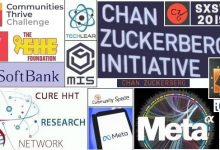
Can you tell me a bit about your background and your current role?
I have an extensive background in the consulting domain and here a particular expertise in global strategic planning throughout several industries including technology, renewable energy, automotive, heavy engineering. Specializing in market development and implementation of business plans, product development, and management of international business development as Managing Partner for Tibil Solutions I oversee our international go to market strategy and have a focus strong focus on the manufacturing sector
What are the pros and cons of IoT?
The Internet of Things works on the premise, that the more the information that is analyzed, the easier it gets to make the right decisions. Therefore, IoT generates a large amount of data-far more than any human, can cope with. The date generated by IoT provides cognitive insights and is designed to function with extreme accuracy, and therefore, it eliminates errors while monitoring and tracking data in real-time.
This high-level of precision facilitates the automation process of routine and repetitive tasks which would otherwise be very time-consuming. The Internet of Things can also create more financial opportunities by reducing costs and process complexity. Estimates predict that linking the physical and digital worlds could generate up to $11.1 trillion a year in economic value by 2025.
However, IoT technologies can be a double-edged sword. The most pressing and talked about disadvantage is the risk IoT poses to data security and privacy
How Manufacturing Analytics can impact the business of SMEs
Manufacturing analytics can offer organizations a significant look into their business processes to help find ways to improve them. Major use cases are:
- Predictive maintenance: Ensures highly reduced down time. It works by analyzing performance data to determine when a component is likely to fail. For example, the analysis of time series data from IoT sensors (such as for vibration or temperature) can be used to predict equipment failure. This helps to limit downtime and also identify the cause of the problem so that the appropriate adjustments can be made to avoid it being repeated.
- Yield-energy throughput (YET) analytics: Ensures that components and machines are utilized as efficiently as possible. It helps to increase yields and reduce energy consumption. This works by real-time monitoring and optimization of the parameters that the machines operate with.
- Profit-per-hour (PPH) maximization analytics: It can be used to define an optimal setup by looking deeply at the many factors that can impact the final profitability of a product.
- Demand forecasting: By having IoT sensors, many of the communication gaps that often arise between production and supply chain can be eliminated by having real time data made available to all relevant stakeholders.
Other applications include better asset tracking, supply chain visibility, and inventory management.
Which tool is most suitable for SMEs operation and how to implement them seamlessly in their current manufacturing process?
This clearly differs based on company specific requirements. While there maybe one tool that is used widely by one particular organisation, it may not be the same across companies.
One possible approach to selecting an appropriate tool, could be to start in areas where an enterprise has significant problems, for example high rejection rates or customer complaints. It could also be that profits for an important product range are going down or emerging technologies are making a product obsolete.
In all these cases it is important to get the relevant data to better understand the problems, identify the root-cause by different analytical means and arrive at a significantly better solution.
If you have greenfield project and a sound financial backing, it would even be possible to identify completely new methods of manufacturing.
Is IoT in smart industry only a win for the developed countries? Who will benefit most?
The information- or knowledge-based economy does not need an extremely high infrastructure cost. Emerging markets today have in many cases both the technological expertise and the infrastructure capital to embrace IoT service and product technology solutions. Ultimately there will be different business models and go to market strategies in developing markets and emerging markets and both will benefit from IOT
Do you think there is a difference in attitudes using IoT solutions between Europe, US, and Asia?
The attitude may not be so different, but the conditions are definitely not the same. Europe has a strength in machine and product design and manufacturing, Asia in Software development and Innovation and the US has its IT giants and a large number of start-ups.
Given these diverse strengths, the need of the hour is open markets, global co-operation, and the utilization of each other’s strengths. Indian software companies could be ideal partners for German machine builders and American software companies could supply the artificial intelligence modules.
It is an illusion that one company can do everything. With cooperation, the speed of development will be much faster and the technical accuracy will be higher.
What new revolutions we should expect in next 10 years?
I would like to highlight here two major developments – AI and Autonomous Vehicles:
- Artificial intelligence will be the fundamental tool needed to make sense of the vast amount of data collected these days, and make it usable by business. AI will help IoT data analysis in the following areas: data preparation, data discovery, visualization of streaming data, time series accuracy of data, predictive and advance analytics, and real-time geospatial and location.
- One key application of AI will be around the development of autonomous vehicle. Autonomous vehicles of all kinds – cars, taxis, trucks, and ships, will become in the next 10 years truly independent and commercially viable. This is a massive innovation that will change the entire transportation system as we know it. We have already seen the introduction of driverless cars, and while it’s still a technology with a few rough edges, this decade will see it in its polished form. Ultimately this development will have a direct impact not only on mobility concepts but also on the way we live. The next decade is set to transform self-driving cars by perfecting the technology.
Prepared by,
Stanislava Angelova
/Editor at DiTech Media/











